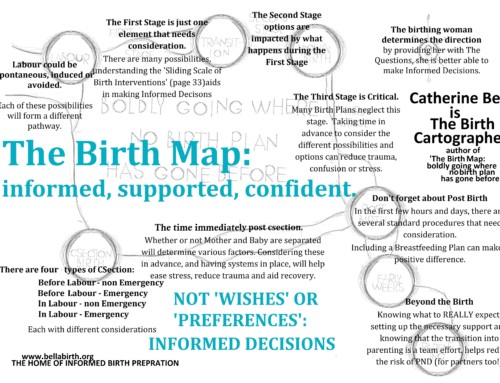But as I said, the study leaves lots of questions to be answered, so what did the study find and how did they find it? The authors examined data from live birth records and educational records in the state of North Carolina. The educational records provided the information on the autism diagnosis while birth records provided information on infant health, parental demographics, maternal medical history, gestational age, parity, and of course, information about the labour and birth. The other information is important as many of these factors were included in the analyses as potential confounds; their inclusion in the statistical models allowed their effects to be controlled for. The use of public records allows for two major benefits to the research: (1) A much larger sample size which is critical when looking at an outcome that is relatively rare. Autism, which has been on the rise, is still only found in 1 in 88 children in the United States. Thus a sample of 500 (huge for many research projects) would only have an incidence of between 5 and 6 children with the diagnosis. This makes comparisons almost all but impossible. (2) Having the birth records means that the researchers need not rely on maternal recall for the events of her birth. While we’d like to think that we’ll remember everything, chances are we won’t recall it exactly and may not even be aware of some of the medical procedures used during birth. I, for one, was very surprised to find out I was given antibiotics for my temperature increase during my labour. It was something not mentioned to me (or I simply was so focused on pushing it went over my head) that if someone had asked, I’d have said I never had any. I hope you can see that the use of data set here is a huge strength to this research. Without boring you, I’ll tell you their stats are also incredible. They did every check in the book to make sure their results weren’t biased by methods used, the fact that the outcome is rare (which can happen), and separated their models by child sex given the findings that boys were three times more likely to be diagnosed with autism than girls. And as mentioned above, they included various confounds known to be linked to not only autism but other neonatal neurological conditions (e.g., cord prolapsed, maternal hypertension) or that have simply coincided with the rise in inductions and augmentations and may be the reason for any association (e.g., caesarean sections). What did they find? I’ll focus on the model which includes both confounds (including those that were found to be non-significant) just for completion sake. Here are the main, significant findings: (1) For boys only, there was a 35% increased risk of autism when the mother’s labour was both induced and augmented. (2) For boys only, there was an 18% increased risk of autism when the mother’s labour was induced only. (3) For boys only, there was a 15% increased risk of autism when the mother’s labour was augmented only. (4) For girls only, there was an 18% increased risk of autism when the mothers’ labour was augmented only. (5) Maternal age of 32 (compared to a mean of 26) was associated with a 31% increase in risk of autism. (6) Being first born was associated with a 19% increase in risk of autism. (7) Greater education was associated with a higher risk (11% for having some college, 33% for college degrees). (8) Mothers with diabetes mellitus had a 23% increase in risk of autism. (9) Gestational age of less than or equal to 34 weeks was associated with a 25% increase in risk of autism. (10) Children born between 1991 and 1995 or earlier also showed an increased risk (dependent on the year) relative to those born in 1990. (My thoughts are to do with the peak in diagnosing that occurred in the late 90s, meaning these may be false positives to some degree. The authors do not hypothesize on this finding.) While this may seem straightforward, as I mentioned there are limitations to the study that raise questions we must consider and answer in future research. The first limitation is that certain information, like whether or not the mother had an epidural or what the actual dosages of the induction and augmentation were, were not included. It is quite probable that there is a dose response or an interaction with induction/augmentation and the use of the epidural (which typically follows). However, without that information, there is little that can be said on the matter. The second question is the cause/effect issue. It is quite possible that children with autism have problems prenatally that result in the need for induction or augmentation. Although the reasons for the inductions and augmentations were not included (a sad limitation as this should be on every health record as I see it), one reason to support this view is that children who would eventually be diagnosed with autism had births with a higher risk of fetal distress and presence of meconium. Of course, we can then wonder if the fetal distress and meconium were a result of the induction/augmentation as well (the view I initially thought of when looking at the data). Without knowing the chain of events, it’s difficult to see the entire picture. The last big question would be what causes this response. The hypothesis put forth by the authors, and supported by other research, is that the use of synthetic oxytocin (aka pitocin) is the cause as it is the most widely used drug for induction and augmentation. Research has shown that oxytocin is involved in the development of social behaviour and cognitive functioning in humans[2][3]. Other research has found differences in the oxytocin reception in individuals with autism versus controls[4]. We know very little about how the use of oxytocin in birth influences the normal development of oxytocin and this is one possible outcome. Clearly it is one that would interact with other epigenetic or genetic factors, but we don’t know what these factors are either. This hypothesis would require more research which specified the type of medications used for induction and augmentation as well as the dose response. If the findings held then we would need to start looking at the epigenetic and genetic factors that interact to cause the outcome. In the end, the authors are clear to point out the many benefits of induction. While there are clear benefits to inductions when mom or baby is in distress or at risk of much greater morbidity and mortality, I am of the view that these types of inductions are rarely beneficial with medical cause. However, apparently the recent Cochrane review on induction found planned induction was associated with better outcomes for women at or over term, including lower perinatal death for infants and fewer incidences of meconium aspiration and fewer c-sections[5] (I haven’t read it in full myself yet, just the abstract, but am including the citation for those interested – as I am and plan to read asap). Thus, the concern with a non-medically-necessary induction and autism needs to be balanced against the other outcomes that may or may not be of concern to the family. And in all this, we must also remember the risks are overall quite low. All in all, the research is sound and raises very interesting questions about the use of induction and augmentation in labour. It is by no means conclusive and more research is needed to better understand this relationship. As of now, it should be one more piece of information that parents are presented with if they are facing or looking into induction. [Photo credit: Prince William County Public Schools Website]
[1] Gregory SG, Anthopolos R, Osgood CE, Grotegut CA, Miranda ML. Association of autism with induced or augmented childbirth in North Carolina birth record (1990-1998) and education research (1997-2007) databases. JAMA Pediatrics 2013; doi: 10.1001/jamapediatrics.2013.2904. [2] Bartz JA, Hollander E. The neuroscience of affiliation: forging links between basic and clinical research on neuropeptides and social behavior. Horm Behav. 2006; 50: 518-528. [3] Insel TR, Young L, Wang Z. Central oxytocin and reproductive behaviours. Rev Reprod. 1997; 2: 28-37. [4] Gregory SG, Connelly JJ, Towers AJ, et al. Genomic and epigenetic evidence for oxytocin receptor deficiency in autism. BMC Med. 2009; 7: 62. [5] Gülmezoglu AM, Crowther CA, Middleton P, Heatley E. Induction of labour for improving birth outcomes for women at or beyond term. Cochrane Database Syst Rev. 2012;6:CD004945. An ahead-of-press article in JAMA Pediatrics
An ahead-of-press article in JAMA Pediatrics
Inductions and Autism
[1] made headlines recently when it reported findings suggesting that the use of inductions and augmentations in labour were associated with an increased risk of autism (but not an autism spectrum disorder; i.e., the focus was on primary autism). It’s a fascinating study and probably raises more questions than it answers, but in a society where birth is rapidly changing with few checks on the possible outcomes of this, it’s a needed wake-up call that perhaps we need to start checking everything a little bit more before we rush to medicalize birth even more.






Thanks for the write-up. This is fascinating as both a mother and school psychologist. In additin to your questions, I wonder about likelihood of diagnosis. Are parents with higher levels of education (point #7) more likely to have access to/receive routine medical care for their child so that a pediatrician can notice red flags, or be more educated in the red flags themselves, versus parents with lower levels of education?
I fear the media beat up the research article you refer to will generate another scare along the lines of the MMR. I admit I have not read the original article but from your summary it appears that some well known contributors of autism risk have not been controlled for – ie birth weight, paternal age and use of assisted conception are three off the top of my head. I also find it hard to believe that use of induction etc can be the cause when again we know that maternal age, prematurity, low birth weight are all risk factors for autism and presumably would also be factors to increase the likelihood of induction etc. Also from my understanding use of induction, epidurals etc varies from country to country but all the research has the rate of autism very consistent across the world which to me would indicate this is too simplistic an explanation
One thing I have to say though, I find the reliance upon medical records to be frightening. I’ve read my medical records, I know other people who have read their medical records. I for one would trust a soothsayer over the ‘official’ record 7 days a week and twice on Sunday as the old saying goes. I know of people whose medical records indicated c-sections for vaginal deliveries for heaven’s sakes! I’ve seen contradictions in the same paragraph written by the same hand in mine! Medical records won’t be a reliable witness until and unless the patient countersigns everything within a reasonable amount of time! You don’t know if you got antibiotics, all you know is you don’t remember getting them and someone wrote that you did.
Agree Jespren. Medical records are only as good as the person filling them in. My first job was working in a nursing home. As a new graduate I was horrified how often someones left hemiplegia would change to a right hemi and back to left from one entry to the next or even in the same entry! or dementia diagnoses changing from alzhiemers to multi-infarct! I also find the use of the educational records to determine autism status problematical. In my professional experience many children particularly high functioning children are still not officially diagnosed at school age, some will be misdiagnosed, some parents will not have told the school (as they don’t want their child labelled) or the school may have decided that the child has autism and entered that in their record (I have personally seen all of these happen). So we actually have no guarantee that a number of children in the ‘no autism’ group actually don’t have autism and vice versa.